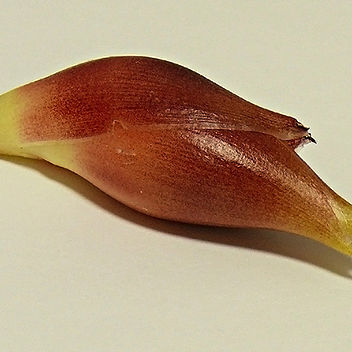A ginger family herb. It keeps growing from year to year and grows in woodland. The rhizomes are yellowish. There is often no leaf stalk. The leaf blade is sword shaped and 20-37 cm long by 4-6 cm wide. The tip is heart shaped. The flower arises from the rhizome. It is 5-7 cm long. There can be a stalk up to 17 cm long. The sheaths are scale like. The bracts are reddish green with purple veins. The fruit is a capsule which is oval and red inside. The seeds are black. The seed layer is white.

